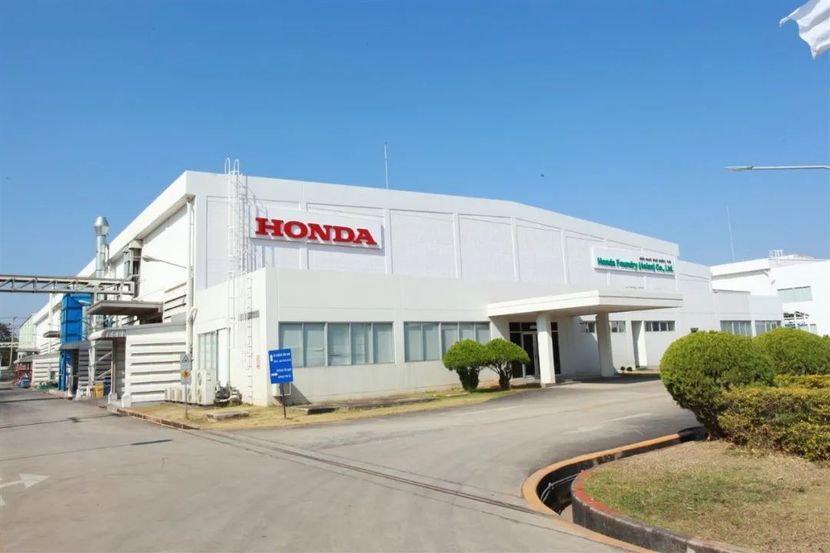
Honda has announced a major decision to start trial production of "all-solid-state batteries" for pure electric vehicles (EVs) from January 2025. The news quickly attracted widespread attention in the automotive and technology worlds. All-solid-state batteries are considered by Honda as the first choice for the new generation of batteries, which are expected to increase their range to twice that of existing batteries, while reducing battery costs by 25%. Honda plans to start using the technology in new cars sold in the second half of the 2020s, and is also considering applying it to motorcycles and aircraft in the future. Honda's move is intended to counter more price-competitive Chinese companies by pushing through cost cuts. However, from a technical point of view, is Honda's decision really as optimistic as it says? This paper will discuss this in depth.
Honda held a presentation at its all-solid-state battery verification facility in Tochigi Prefecture to showcase its investment and progress in this area. The base has a total construction area of 27,400 square meters, has invested 43 billion yen to introduce test equipment, and has the world's longest all-solid-state battery production line. This large investment undoubtedly shows Honda's emphasis on and expectations for all-solid-state battery technology. However, input and output are not always proportional, especially in the high-risk field of science and technology research and development.
Compared with traditional liquid lithium-ion batteries, the biggest advantage of all-solid-state batteries is that they can increase the amount of power stored, thereby greatly improving the driving range. Honda's data shows that by the second half of the 2020s, the range per unit of battery volume will double, and by the 2040s it will increase to more than 2.5 times. This means that a mid-size EV, when fully charged, can travel the equivalent of 1,000 kilometers between Tokyo and Fukuoka. This data is undoubtedly exciting, but it also requires us to calmly consider the technical challenges behind it.
First of all, although the technical principle of all-solid-state batteries seems simple, the actual operation is full of complexity. The core of the solid-state battery is that its electrolyte is solid, which avoids the safety risks such as electrolyte leakage and fire in traditional liquid batteries. However, solid electrolytes are far less conductive than liquid electrolytes, which has made it difficult for solid-state batteries to achieve breakthroughs in energy density and charging speed. Honda claims that its all-solid-state battery has a significant increase in range, but does this mean that Honda has solved the problem of insufficient conductivity of solid-state electrolytes? This is a point worth exploring.
Second, the cost of all-solid-state batteries is also a challenge. While Honda says it will reduce the cost of all-solid-state batteries by 25 percent by the second half of the 2020s and 40 percent by the 2040s, it won't be easy. The manufacturing process of solid-state batteries is far more complex than that of liquid batteries, and the materials and equipment required are also more expensive. Honda plans to improve efficiency through measures such as process integration, but the difficulties and challenges that may be encountered in this process cannot be ignored. In addition, even if the cost is reduced, the price of all-solid-state batteries in the initial stage may still be much higher than that of liquid batteries, which is undoubtedly a big burden for consumers.
Moreover, although the safety of all-solid-state batteries has been improved to a certain extent, it is not absolutely safe. Honda unveiled the test equipment at the briefing and demonstrated its strict management system and safety measures. However, any technology has its potential risks and uncertainties. The various issues that may be encountered during the manufacturing and use of all-solid-state batteries, such as material stability, thermal management, and compatibility with other components, need to be rigorously tested and verified. Honda claims that its all-solid-state batteries are not prone to vehicle fires, but this does not completely eliminate consumer concerns and doubts.
In addition to technical challenges, Honda's competitive pressure in the field of all-solid-state batteries cannot be ignored. Rivals such as Toyota Motor Corp. and China's SAIC Motor Corp. are actively developing all-solid-state battery technology and plan to launch production vehicles equipped with the technology in the next few years. Although Honda has invested heavily in this field, it is still unknown whether it can stand out in the fierce market competition. In addition, Honda has been relying on other companies to provide batteries, independent research and development of battery technology is undoubtedly a new challenge for it. Whether Honda can establish a sound R & D and production system in a short period of time to ensure the quality and supply stability of all-solid-state batteries is also an important issue it needs to face.
Honda's plan to consider all-solid-state batteries in operations such as aircraft and motorcycles, while showing its confidence in and expectations for this technology, has also raised more technical doubts. Aircraft and motorcycles have much higher battery performance requirements than cars, especially in terms of safety, weight and charging speed. Whether Honda can ensure these requirements under the premise of all-solid-state batteries for aircraft and motorcycles, is still a question worth pondering. In addition, the plan to reduce costs and improve price competitiveness through mass production results also needs to be tested and verified by the market.
To sum up, although the launch of Honda's all-solid-state battery technology shows its ambition and strength in the field of new energy to a certain extent, it also faces many scientific and technological challenges and competitive pressures. From a technological perspective, Honda's decision is not without risk. The development and application of all-solid-state battery technology needs to go through a long process and rigorous testing, and whether Honda can make a breakthrough in this field and occupy a leading position in the market is still unknown. Therefore, Honda, while advancing all-solid-state battery technology, also needs to remain calm and cautious to deal with the various challenges and difficulties that may arise. Only in this way can Honda go further and more steadily in the field of new energy.

Recently, US Treasury Secretary Mnuchin publicly stated that the selection process for the next chair of the Federal Reserve has been initiated.
Recently, US Treasury Secretary Mnuchin publicly stated tha…
At the dawn of 2026, the United States launched a military …
From the stiff step when it first debuted in 2022 to demons…
"On the early morning of January3,2026, the United States l…
"We absolutely need Greenland," Trump's straightforward sta…
On January 3rd, the US Special Forces launched a surprise a…